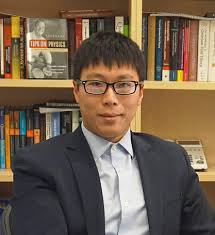The quantum light-matter interactions between the molecule and the quantized radiation mode inside an optical cavity create a set of hybridized electronic-photonic states, so-called polaritons, opening up new possibilities to control chemical reactions by exploiting intrinsic quantum behaviors of light-matter interactions.
In this talk, I'll present our recent investigations on new chemical reactivities enabled by cavity quantum electrodynamics and demonstrate detailed mechanisms of how quantized light-matter interactions can change the outcomes of chemical reactions.
First, we demonstrate that the selectivity of a model photo-isomerization reaction can be controlled by tuning the photon frequency of the cavity mode, providing new ways to manipulate chemical reactions via light-matter interaction. We further investigate collective quantum effects enabled by coupling quantized radiation mode to multiple molecules.
Second, I will present the fundamental theoretical framework for molecular cavity quantum electrodynamics by resolving the gauge ambiguities between the Coulomb gauge and the dipole gauge Hamiltonians under the electronic state truncation. We resolve this ambiguity by constructing a unitary transformation operator that properly constrains all light-matter interaction terms in the same subspace.
Finally, I will present a theoretical explanation of the cavity modification of the ground state reactivity in the vibrational strong coupling (VSC) regime in polariton chemistry. Our theoretical results suggest that the VSC kinetics modification is originated from the non-Markovian dynamics of the cavity radiation mode that couples to the molecule, leading to the dynamical caging effect of the reaction coordinate and the suppression of reaction rate constant for a specific range of photon frequency close to the barrier frequency.
Speaker:
Institution:
Location:

